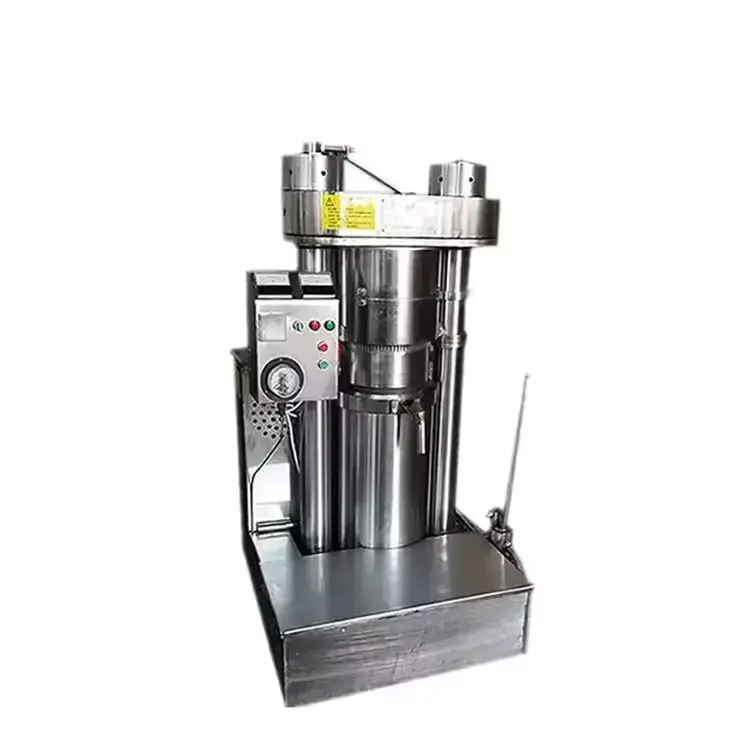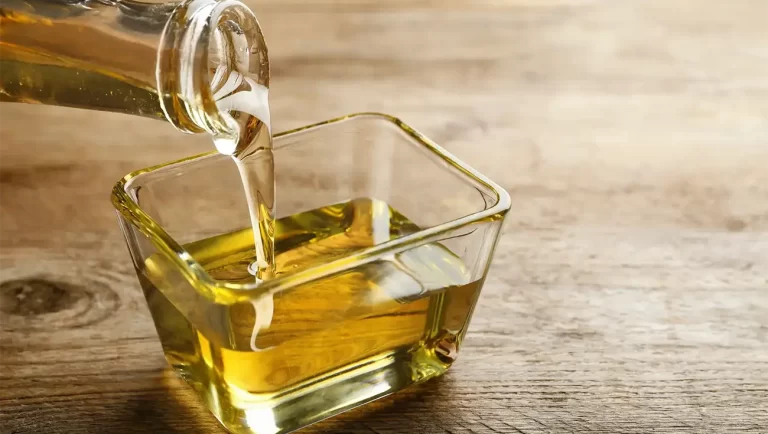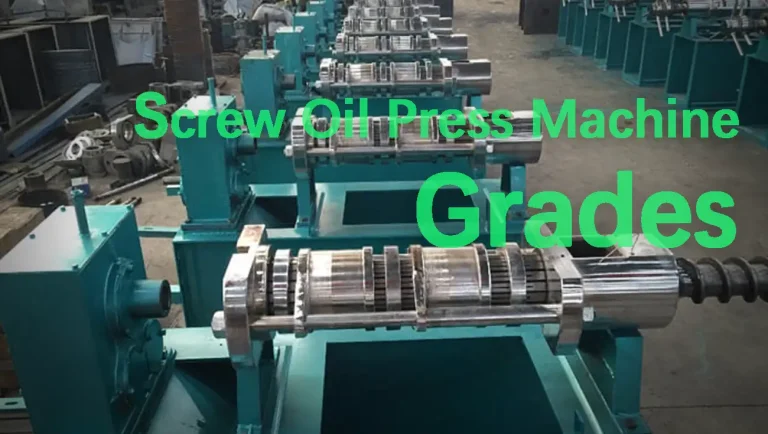Liên hệ với chúng tôi ngay

You’ve successfully produced your oil, and now you have to get it into bottles. It’s pretty natural to think, “Can’t I just do this by hand to save a little money?” I get it, and it’s a question almost everyone asks when they’re starting out. But a professional filling machine isn’t just about speed; it’s a cornerstone for building a serious business.
At its heart, an edible oil filling machine does one simple job: it puts a precise and consistent amount of oil into a container, whether that’s a glass bottle, a tin can, or a large jug. Think of it as the final gatekeeper for your product, ensuring every single package that leaves your facility is perfect.
It goes through a series of processes, including pumping, metering, filling, and capping. The working principle is as follows: First, it pulls the oil from a big storage tank through clean, food-safe pipes, then comes the most important part: getting the amount just right. The machine measures the perfect amount of oil for every single bottle. This has to be exact, both to keep customers happy and to follow the rules.
With the amount measured, special nozzles dispense the oil into the bottles zipping by on a conveyor belt. And I’m not talking about simple spouts. These things are designed to keep the oil from foaming up or getting messy. No drips, no oxidation.
And for the grand finale? The filled bottle gets capped and sealed tight. This is what keeps it fresh and safe from any leaks or nasty stuff getting in. That whole dance is what turns your giant tank of oil into something you’d be proud to see on a shelf.
To understand the full oil filling workflow, explore this blog post. We cover the key equipment in the process, such as the bottle sorter, bottle washer, sealing machine, and conveyor system.
Key Features and Functions to Consider Before Purchasing an Oil Filling Machine.
When you start looking at brochures and talking to sales reps, you’ll be hit with a lot of technical specs. It’s easy to get lost. But from my years in the field, I can tell you that it all boils down to a few key areas.
Of all the specs you’ll look at, none are more important than the filling and metering methods. These two things define how the machine works and are directly tied to the type of oil you have.
Filling and Metering Method.
The filling method is the physical mechanism a machine uses to push oil. Such is a simple gravity filler, is for free-flowing, thin oils. In order to handle a machine which has more power and makes thicker products more viscous, a piston or a pump filler got all this oil into the container mechanically. Then there are types of machinery such as overflow fillers that aim to make every bottle reach exactly the same height visually for easy sale.
Now, tied directly to this is the metering method. This is all about accuracy. Most machines use volumetric metering, which installs a certain, fixed amount of oil on each stroke to the pump, much like using a measuring cup. This method has stood the test of time and is in years generic term for its reliability. There is no substitute for net-weight metering when you absolutely have to have the highest accuracy. A net-weight filler uses a precision scale of the highest type to weigh the oil as it fills and cuts off just as soon as target weight is reached. This is especially good for controlling product giveaway, since the density of oil can change with temperature.
Filling Speed.
Another thing that is worth mentioning is the filling speed. Pump types, the number of nozzles and the stability of pneumatic components are factors that affect filling speed and price. The type of the pump determines the flow rate of the machine (how much liquid can it pump in a certain time), the number of nozzles means how many containers the machine can fill at once, stable pneumatic components ensure consistent, fast, and repeatable movement, minimizing breakdowns and errors. Pair this with a well-adjusted filling system that matches your bottle’s height and neck diameter, and you’ll have a setup that’s both durable and perfectly compatible with your packaging line.
We’ll only briefly touch on this here. If you are interested in truly understanding the differences between pump types such as piston pumps and gear pumps for filling machines, and to see which one is right for you, I’ve put together a more detailed guide you can find here: [Main Types of Oil Filling Machines]
Accuracy.
Accuracy often requires a trade-off with speed. You might see two liquid filling machines on the market that both have a filling capacity of 500 bottles per hour, but their prices differ by several thousand dollars. The reason lies in the filling accuracy. To achieve stricter filling accuracy, there are strict requirements for important components in the filling machine, such as the pump structure, PLC control program, and filling nozzles.
Equipment Component Materials.
What’s the right machine without the right materials? When it comes to oil filling or packaging machines, the material determines the quality and safety. A reliable machine should always be made from food-grade stainless steel, the same type widely used in food and pharmaceutical equipment. Stainless steel offers strength, hygiene, and easy cleaning — all essential for maintaining product purity during production.
During the production process, we ensure that all surfaces of parts that come into contact with the product meet stringent food contact standards, thereby protecting the quality of our customers’ products and their business reputation. If the liquid being filled has a high salt or acid content, we can also upgrade to 316 stainless steel upon request, as ordinary stainless steel may corrode over time.
Container Compatibility.
As we all know, the shape and size of filling containers vary depending on the product design. These might include rectangular bottles, round bottles, tin cans, large-capacity containers, etc. Therefore, the filling machine’s conveyor belt, filling volume, and filling program need to be compatible with these containers. In large-scale industrial fully automated filling machines, the machines are customized based on container models in the early stages of production and cannot be compatible with containers of other sizes. For small and medium-sized enterprises, our fully automatic filling machines can be pre-programmed with data for various common container sizes, allowing customers to switch or adjust at any time. However, please note that because the hardware components of the filling equipment are fixed, the adjustment range of the filling machine is limited, and changes in container style cannot exceed the adjustable range.
Now that your machine is built right and fully compatible with your bottles and oil, let’s talk about what takes it from good to great. These components below add more features that separate a good machine from a great one, especially on high-end equipment.
- A solid control system, usually a PLC with a touchscreen interface, lets you easily adjust fill volumes and speeds and save “recipes” for different products.
- Anti-drip devices. They solve the messy and wasteful problem of stray drops on your bottles and conveyor after a fill cycle, often using specialized nozzles.
- For certain oils or daily chemical products that are prone to foaming under pressure, anti-foaming functionality is also crucial. This is typically achieved through nozzles that fill from the bottom up or a vacuum filling system, minimizing splashing.
- Finally, an automatic cleaning system, often called a ‘Clean-in-Place’ (CIP) system, can be a lifesaver. It automates the washing and sanitizing process, which saves an enormous amount of time and ensures your machine is hygienically clean between batches.
Comparing Automatic vs. Semi-Automatic vs. Manual Oil Filling Machines.
One of the biggest decisions you’ll make as you grow is choosing your level of automation. It’s the classic trade-off between upfront investment and long-term efficiency.
For the startup or the small-batch artisan, the manual filler is the entry point. It’s simple, operated by a hand lever or foot pedal, and has a very low initial cost. Its greatest strength is its infinite flexibility. You can switch from a tall, thin bottle to a short, wide jar in seconds with zero downtime. But that flexibility comes at a cost. Production speed is entirely dependent on your operator and is typically very low, around 140-290 bottles per hour. It’s perfect for a testing phase or a small farmer’s market operation, but you’ll quickly hit a ceiling.
The next step up, and the sweet spot for many small-to-medium businesses, is the semi-automatic machine. This is a hybrid approach: an operator still places the bottles under the nozzles, but the filling process itself is automated. This simple change provides a major boost in consistency and speed, often increasing output by 30-50% over a manual setup. It requires a bigger investment, but it represents a scalable middle ground. You still have good flexibility for different container sizes with just a few minutes of manual adjustment, but you’re no longer entirely limited by human speed.
Then there’s the fully automatic line. This is the efficiency engine. It handles everything from feeding empty bottles to filling, capping, and labeling with minimal human intervention. The leap in productivity is staggering. A fully automatic machine can often produce in 16 hours what would take a manual operator 720 hours to complete. This is the choice for large-scale production. However, this power comes with a critical trade-off that you mentioned: container flexibility. These machines are engineered for specific bottle dimensions. If you plan to upgrade your packaging in the future, you need to know that most lines can only tolerate a size change of about ±15% before you need a major (and expensive) hardware refit, like new guide rails or filling heads.
But the decision isn’t just about speed; it’s about the long-term financial picture. A manual filler is cheap to buy, but your labor costs are high and perpetual. A semi-automatic machine has a moderate upfront cost and provides a fast return on investment by reducing the active labor needed per bottle. The initial investment for a fully automatic filling line is very high, and unless your daily output is exceptionally high, the payback period is long.
So, why would anyone choose it? Because over a 10-year horizon, the math changes completely. For a high-volume operation, the massive savings in labor costs eventually overtake the high initial investment. One analysis I saw showed that over a decade, a fully automatic line saved over $600,000 in labor compared to a manual process. The key takeaway is this: a full line is a long-term play for businesses that have stable products and are ready to scale massively.
Máy ép dầu thủy lực:
Chúng dựa vào áp suất tĩnh của chất lỏng, giống như một lực kẹp chắc chắn, không ngừng nghỉ giúp hoàn thành công việc. Những chiếc máy này tỏa sáng khi làm việc với các loại hạt giàu dầu như vừng, óc chó hoặc ô liu. Điều tôi thực sự đánh giá cao là cách chúng giữ mọi thứ mát mẻ trong suốt quá trình, nghĩa là dầu vẫn giữ được hương vị tự nhiên và chất dinh dưỡng của nó—hoàn hảo cho dầu ép lạnh hàng đầu. Thêm vào đó, dầu ra rất trong và hầu như không có cặn bẩn. Tuy nhiên, chúng phù hợp hơn với các mẻ nhỏ hơn và không tạo ra nhiều như máy ép trục vít. Nhân tiện, rất nhiều máy ép dầu lạnh thương mại được chế tạo dựa trên công nghệ thủy lực.
| Machine Type | Automation Level | Estimated Price Range |
| Gravity Filler | Bán tự động | $3,000 – $8,000 |
| Hoàn toàn tự động | $9,000 – $25,000+ | |
| Overflow Filler | Bán tự động | $4,000 – $10,000 |
| Hoàn toàn tự động | $12,000 – $35,000+ | |
| Piston Filler | Thủ công | $500 – $2,500 |
| Bán tự động | $3,000 – $10,000 | |
| Hoàn toàn tự động | $15,000 – $50,000+ | |
| Gear Pump Filler | Bán tự động | $4,500 – $14,000 |
| Hoàn toàn tự động | $18,000 – $60,000+ | |
| Rotary Pump Filler | Bán tự động | $8,000 – $20,000 |
| Hoàn toàn tự động | $25,000 – $90,000+ | |
| Vacuum Filler | Bán tự động | $5,000 – $15,000 |
| Hoàn toàn tự động | $20,000 – $70,000+ |
Still unsure how to configure your filling line?
Contact us for professional guidance.
What is the most important factor when choosing an edible oil filling machine?
The most important factor is your oil’s viscosity. This determines whether you need a simple gravity filler for thin oils or a more powerful piston or pump filler for thicker products. Matching the machine to the oil’s thickness ensures both accuracy and operational efficiency for your business.
How much does an oil filling machine cost?
The cost of an oil filling machine varies widely based on its features. A simple manual piston filler can cost under $2,500, while a semi-automatic machine ranges from $5,000 to $25,000. A fully automatic production line can easily exceed $50,000, depending on its speed and number of heads.





